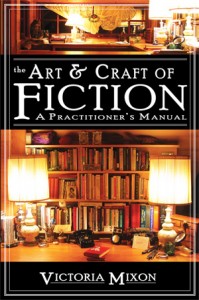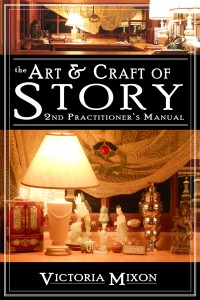Last week we talked about the stories of How We Got into Writing. They were great fun—all those busy four-year-olds cooking up stories, all those mad teens clacking away on typewriters under the raised eyebrows of the taken-aback, even some of us who came to this craft recently and are only now discovering the fascination of it. What maniacs we all are, utterly devoted to this simple world of words!
So this week let’s think about different stories: this time about those marvelous, convoluted degrees of separation that separate us all from each other—and from the authors we love.
How many degrees of separation are you from your literary idols?
One of the writers I love best is the extraordinary early-twentieth-century Danish writer, Isak Dinesen. Famous in our time as the author of Out of Africa—starring Meryl Streep and Robert Redford—which is the memoir of her life on her coffee plantation in Kenya, Dinesen was known throughout Europe for decades before that 1985 movie as the author of some of the most wonderful, gothic, mystical literature ever through her collections of short stories, Seven Gothic Tales, Winter’s Tales, and Last Tales. She also wrote a companion book to Out of Africa—even more beautifully-rendered stories of Africa—Shadows on the Grass, as well as many wonderful essays (and a ‘potboiler’ mystery, The Angelic Avengers, under the pseudonym Pierre Andrezel). She was interviewed as Baroness Karen Blixen, her real name, by The Paris Review in 1956, only a few years before she died.
One of the people Dinesen knew in Kenya was a young American woman, Beryl Markham, who’d been raised there by her father. Markham was a teen when Dinesen was an adult (she makes a brief appearance in Out of Africa under the name Felicity), and she was always deadly jealous of Dinesen, particularly of her love affair with the coveted Denys Finch-Hatton. Markham has claimed Finch-Hatton was in the process of leaving Dinesen for her when he died and, in fact, that Finch-Hatton invited her to join him on his fateful plane ride. Markham was studying at the time to become a bush pilot, delivering mail and supplies around rural Kenya in the early days of the airplane, and eventually became the first woman to cross the Atlantic in a plane from east to west. Markham wrote a gorgeous memoir chronicling that trip, West with the Night, in the style of one of her lovers, the quintessential Antoine de Saint Exupéry.
However, when Markham was old, her third husband, LA scriptwriter Raoul Schumacher, came out with the claim that, in fact, he had written West with the Night. This claim got quite a bit of coverage in works written about Markham in the 1980s (when West with the Night was rediscovered and republished), especially by the biographer Errol Trzebinski.
In fact, the LA writer Scott O’Dell, author of the Newbery award-winning Island of the Blue Dolphins and friend to both Markham and Schumacher, made quite an issue out of Schumacher’s assertion, trying very hard to have it verified in order to force Markham to give up her claim to authorship. He failed—to this day, nobody knows for certain who wrote West with the Night, although most agree somebody edited it into its final polished form.
As it happens, O’Dell and his wife, the author Elizabeth Hall, were close friends of my aunt and uncle, who helped raise me. From the time I was quite young, I had autographed copies of Hall’s children’s books on my shelf, along with Island of the Blue Dolphins (which I’m afraid I found intensely dry and unreadable until I was an adult). My aunt and uncle even took in Hall’s daughter when her marriage ended in the 1970s and helped raise her baby daughter in their home for her first year of life. Hall’s granddaughter is still a close member of our family—she and I spoke together at my uncle’s funeral several years ago.
And all that makes me four degrees of separation from one of my greatest literary idols of all time, the brilliant Isak Dinesen.
So think about it: who are your literary idols? What stories can you tell? And how many degrees of separate stand between the two of you?
NEXT WEEK: We’re tearing up our front yard—because we don’t like to live uncomplicated lives—and building the hardscape that our house has been missing for five years, so I’ll be here in absentia with: What Does Writing Mean to You?
 The Art and Craft of Fiction:
The Art and Craft of Fiction:
A Practitioner’s Manual
by Victoria Mixon
“The freshest and most relevant advice you’ll find.”—Helen Gallagher, Seattle Post-Intelligencer
“Wonderfully useful, bracing and humorous. . .demystifies essential aspects of craft while paying homage to the art.”—Millicent Dillon, five time O. Henry Award winner and PEN/Faulkner nominee
“Teeming with gold. . .makes you love being a writer because you belong to the special club that gets to read this book.”—KM Weiland, author of Outlining Your Novel
 The Art and Craft of Story: 2nd Practitioner’s Manual
The Art and Craft of Story: 2nd Practitioner’s Manual
by Victoria Mixon
“This book changed my life.”—Stu Wakefield, Kindle #1 best-selling author of Body of Water and Memory of Water
“Opinionated, rumbunctious, sharp and always entertaining. . .lessons of a writing lifetime.”—Roz Morris, best selling ghostwriter and author of Nail Your Novel
“As much a gift to writers as an indispensible resource. . .in a never-done-before manner that inspires while it teaches. Highly recommended.”—Larry Brooks, author of four bestselling thrillers and Story Engineering
“I wish I’d had The Art & Craft of Story when I began work on my first novel.”—Lucia Orth, author of the critically-acclaimed Baby Jesus Pawn Shop
